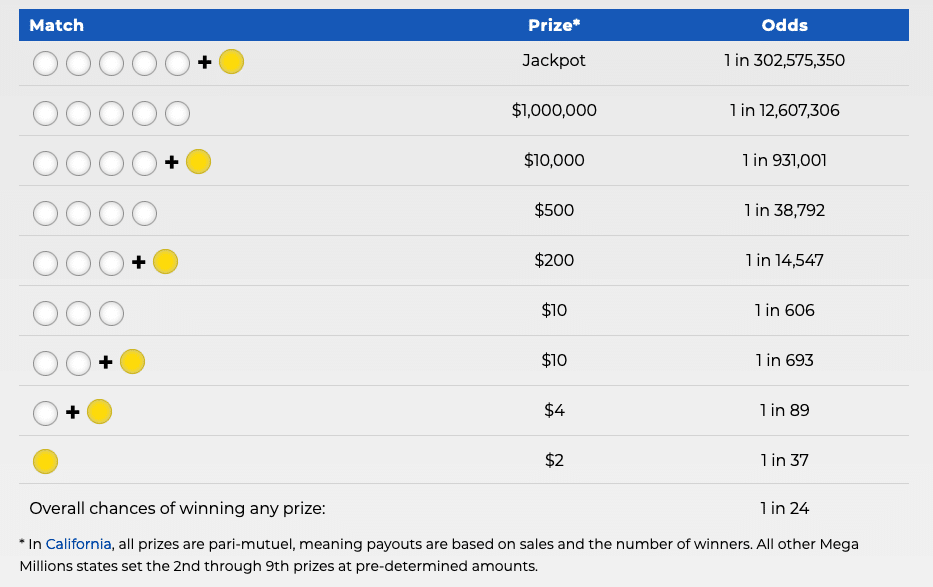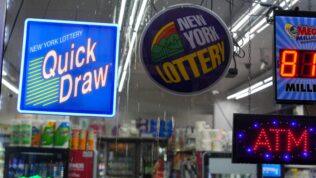Sources: Mega Millions Poised To Make Dramatic Ticket Price Increase From $2 To $5
It's about as close to a done deal as it can be, while one economist says, "what this will all boil down to is a question of price elasticity."
6 min

The consortium that oversees the popular multi-state lottery draw game Mega Millions is weighing a potential major change on the price point and is poised to soon vote to increase the cost of a ticket from $2 to $5, multiple sources have told Lottery Geeks on condition of anonymity.
“My understanding is that they’re stuck on $5, and I think it’s about as close to final as it can be,” said one industry source.
“We’re always looking for fun and exciting opportunities for our players,” Tandi Reddick, communications director for the Georgia Lottery Corporation, said Monday when asked for comment. “We don’t have anything to report today.”
From its inception in 1996 as the “Big Game,” the cost remained $1 per ticket until October 28, 2017 when it rose to $2 and also established a starting jackpot of $40 million. At the height of the COVID-19 pandemic in April 2020, the starting jackpot was modified back to $20 million, where it has remained since.
According to sources, one of the main objectives of this potential jump from $2 to $5 for the base ticket is to distinguish the draw game from Powerball, which is frequently mistaken as the same game as Mega Millions. Another goal is to increase jackpot sizes and potentially non-jackpot prizes. The non-jackpot prizes range in size from $2 for matching the gold Mega Ball, to up to $5 million for matching the five white balls numbered 1 through 70.
And of course, another major goal is to boost revenue flowing to each state’s beneficiaries, often initiatives in education.
But it is something of a gamble as to whether the change would achieve the desired effects.
“What this will all boil down to is a question of price elasticity,” said economist Richard Schuetz, a former commissioner of California’s Gaming Control Board and former CEO at Las Vegas casinos including the Stratosphere Hotel. “Some products and purchases are very elastic, some not at all. For cigarettes, it’s very inelastic. People won’t quit smoking if the price goes up. Whereas with Coca-Cola, well, if the price of a Coke doubles, most people are going to move away from it.”
Mega Millions administrators have been weighing a move of this magnitude for almost two years, and have contemplated other gameplay changes, including the potential introduction of progressive-style jackpots in separate states while the main jackpot accumulates. But that would bring potential operational difficulties and accounting challenges — in other words, a logistical nightmare.
Instead, the nine Mega Millions consortium states — California, Georgia, Illinois, Massachusetts, Michigan, New Jersey, Ohio, Virginia, and Washington State — have apparently coalesced around the idea of a basic increase to $5 per ticket, with a vote to effectuate the change expected to occur at a director’s meeting in Puerto Rico in June, per sources. The current lead director of Mega Millions is Gretchen Corbin, president and CEO of the Georgia Lottery.
Potential for Mega sticker shock?
The potential jump from $2 to $5 for a ticket is not without risk. The expectation is that some segments of the draw game public may balk at the increase. But enough may not that, in concert with effective marketing and more rapidly increasing jackpots, it would juice interest and sales.
And in due course, Mega Millions could fashion a more separate identity from Powerball, the other major multi-state draw game that has breached the $2 billion jackpot threshold once before at $2.04 billion in November 2022, while Mega Millions has produced six of the 10 biggest lottery jackpots in the U.S all-time, ranging from $1.05 billion to $1.602 billion.

“Mega Millions enjoys less brand equity and suffers more from brand confusion than Powerball,” said Lloyd Danzig, managing partner at venture capital firm Sharp Alpha Advisors. “Still, large format draw lotteries have historically benefited from their positioning at the $1 to $2 price and risk alienating core users at a $5 price point. Even if the odds for customers improve, that improvement is difficult to communicate and appreciate.”
According to sources, the Mega consortium has also weighed the possibility of increasing the number of draws per week from two to three, like Powerball did in August 2021, but has opted to not go that route, perhaps to avoid further public confusion between the two games.
At the $5 per ticket level, sources have said that the $1 add-on feature called the “Megaplier” will remain in place with the same effect. On a $2 ticket, for an additional $1 in participating states, a Megaplier ball gets chosen during each drawing and has the potential impact of increasing non-jackpot prize winnings by 2, 3, 4 or 5 times. Thus the overall cost impact of going from $2 to $5 on the base ticket, each of them adding the Multiplier option, would double it from $3 to $6.
“For Mega Millions, what would be the response in quantity purchased?” said Schuetz. “If the quantity stays high enough, this is really going to drive some huge jackpots, if it progresses at the same rate as on a $2 price point. Lottery directors generally have somebody on the math end looking into these things. The best lottery directors I’ve seen are good marketers. But they usually have a few quants around. If these jackpots do surge higher, well, those big jackpots are also the best free advertising they’ve got.”
Several of the game’s member states offer the option of playing for “Just the Jackpot,” omitting the Megaplier and any of the non-jackpot prizes, for which two plays cost $3.
Under the existing matrix, the odds of winning the Mega Millions jackpot are 1 in 302,575,350, while the odds of winning any prize, with a full-price ticket, are 1 in 24.

Under the current structure, there are individuals and lottery pool groups that tend to purchase a certain quantity of tickets regularly, spending a set amount of money. Are there responsible gambling implications to a significant price change?
“While increased bet size is a risk factor for gambling problems, other factors like frequency and speed of play are much bigger ones,” Keith Whyte, executive director of the National Council on Problem Gambling, told Lottery Geeks. “So I don’t think the proposed change would have a significant impact on the rate or severity of gambling problems. But it is an important question that should be answered through research, another reason why the GRIT Act to provide dedicated federal funding for national problem gambling research and efforts like our own NGAGE studies are so important.”
It is unclear whether effectuating the change in June would require a majority vote or supermajority vote. The Mega leadership is generally viewed as a more nimble and efficient group of decision-makers than that of the Multi-State Lottery Association (MUSL), which has its own staff and a more robust membership with 39 member states and U.S. territories or districts.
“While most accounting is handled by each member state individually, key duties such as projecting jackpots, budgeting and expenditures, settlements of draw and wagering data, financial settlements (prize expense shares and banking/cash settlements), monitoring of draw data and statistics, public relations, draw show production and broadcasting, technical duties (i.e. software development) and legal work are all shared,” the group explains on its website of how business gets done.
Odds, ends, and implementation
It is also unclear at this time whether, in concert with the price change, Mega Millions would modify the non-jackpot prize amounts or prize scheme indicated above. Jackpots drive the game and headlines, but for some players, the “churn” prizes, or the lesser wins, hold some importance. Those small wins, which are more routine in scratch-off games that may offer a 3:1 chance of winning at least a free ticket, can provide a dose of satisfaction or positive sentiment about investing in a moonshot, or simply help sustain a bankroll. Of course, funds earmarked for those lesser prizes will take some air out of the jackpot, which remains the centerpiece of the game.
If the $5 ticket proposal is ratified, the plan would be for lottery vendors to create a window in the fall to implement and program system changes, which may require some tinkering. And then the first draw under the new pricing format may take place in approximately April 2025.
Up until January 2010, individual state lotteries participated with either Mega Millions or MUSL, which oversees Powerball in addition to the smaller multi-state draw games Double Play, Lotto America, and 2 by 2. Originally, Mega Millions, nee The Big Game, came into existence as a response by the “big states,” including Georgia, Illinois, and Virginia, to the growing success of Powerball, which first launched in April 1992.
Due to the cross-sell agreement that went into effect in 2010, effectively a truce that allows vendors in member states of one group to sell tickets to both games, Mega Millions leadership may get input from MUSL on the price change, or at least run it by them. Ultimately, though, it would be Mega Millions leadership’s decision to make, just as MUSL would dictate any gameplay changes on Powerball.
Brett Smiley is a journalist and attorney who covers the lottery, iGaming, and U.S. sports betting industries. In May 2017, Smiley co-founded the sports betting industry publication Sports Handle, which he continued to lead after the site’s acquisition by Better Collective in June 2019, until August 2023. Smiley currently serves as chief content officer for Third Planet, LLC, which owns and operates the websites LotteryGeeks.com and CasinoReports.com. You can reach him via email at brett@thirdplanet.us or connect with him on LinkedIn.










